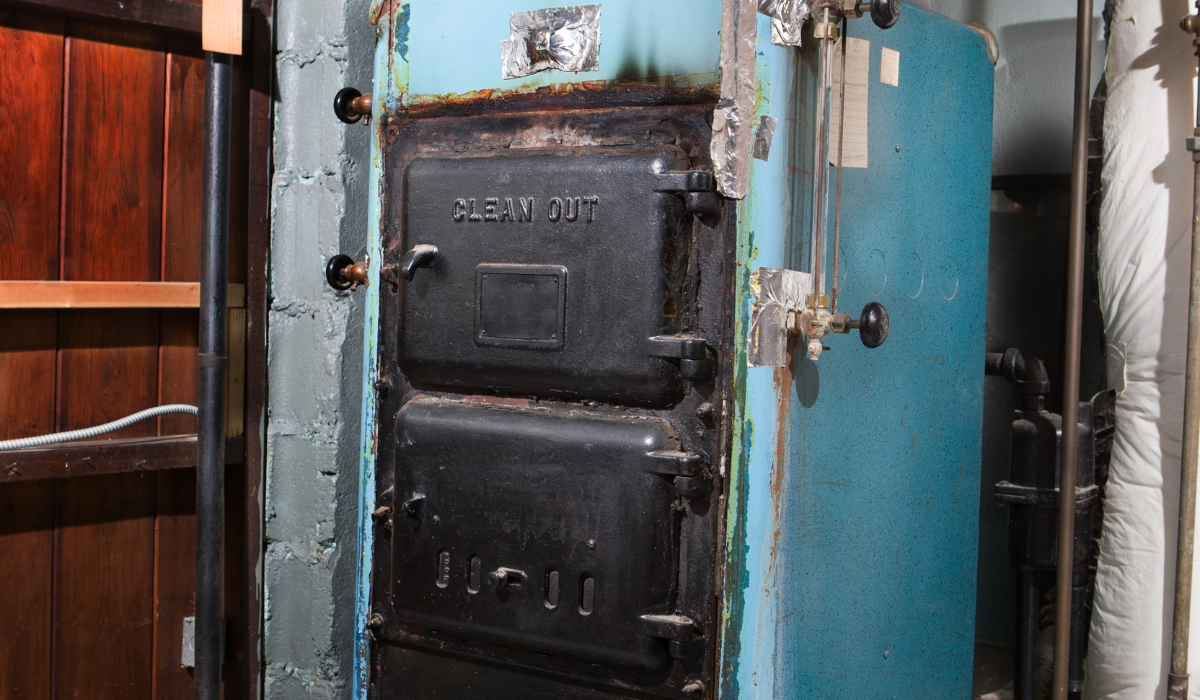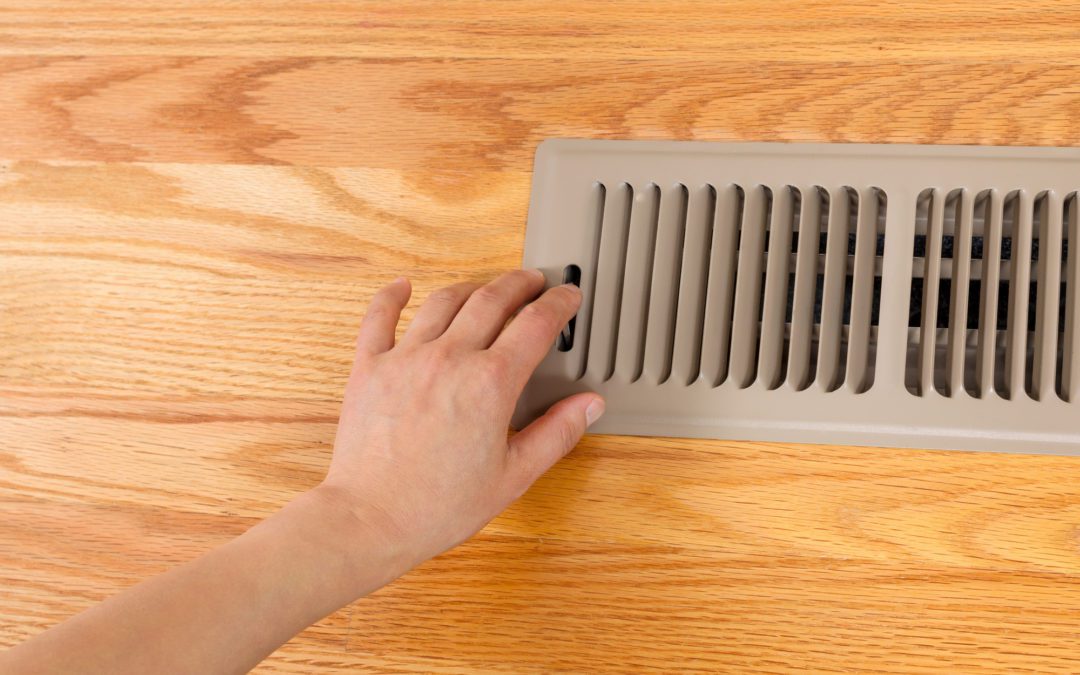This blog was updated in August of 2024
Have you ever thought about why more people choose a forced air furnace? It’s all about getting the most out of your heating and staying cozy. A forced air furnace is a popular choice that heats air and sends it through ducts. This makes it a key part of many HVAC systems.
Learning how it works and its benefits can help you pick the best heating option for your home.
Key Takeaways
- A forced air furnace heats air and circulates it throughout the home.
- This heating method is faster and more efficient than many alternatives.
- Forced air systems can be integrated with central air conditioning for year-round use.
- Understanding its operation helps in making informed home heating decisions.
- Many homeowners prefer forced air furnaces for their cost-effectiveness and efficiency.
Understanding the Basics of Heating Systems
Heating systems are key to keeping your home comfortable during the cold months. They make sure your living space stays warm and cozy. There are three main types: forced air, radiant heat, and hydronic systems.
Forced air systems are very popular because they heat your home fast and work well. They use ducts to spread hot air everywhere in your home. This means they can quickly adjust the temperature. Understanding these systems helps you choose the right one for your needs.
Here’s a quick look at the three main heating systems:
| Type of Heating System | How It Works | Advantages | Disadvantages |
|---|---|---|---|
| Forced Air | Uses ducts to distribute heated air | Fast heating, easy to install, can filter air | Can be noisy, uneven heat distribution |
| Radiant Heat | Heats surfaces directly through panels or floors | Even heat, silent operation, energy efficient | Higher installation costs, slow to respond |
| Hydronic (Water-Based) | Circulates hot water through pipes | Comfortable warmth, low operating costs | Long installation time, requires boiler maintenance |
The Definition of a Forced Air Furnace
A forced air furnace is key in modern heating technology. It moves warm air around your home with a blower fan and ducts. You can choose from natural gas, propane, or electricity for this system, making it flexible for everyone.
This method heats your space fast, spreading air quickly to keep you cozy when it’s cold. The forced air furnace definition highlights its role in heating homes effectively.
How a Forced Air Furnace Works
It’s important to know how a forced air furnace works for good home heating. This system has many parts that work together to keep your home warm. Knowing these parts helps you take care of your furnace better.
The Components of a Forced Air Furnace
A forced air furnace has key parts that each do their job in heating your home. These parts include:
- Heat Exchanger: This part heats the air as it moves through, making it warm.
- Blower Motor: It moves the warm air around your home through the ducts.
- Air Filter: Keeps the air clean by catching dust and allergens before it goes into the furnace.
- Thermostat: Controls the temperature by telling the furnace when to start or stop.
Keeping these parts of the forced air furnace in good shape is key for it to work well and save energy.
Heating Cycle Explained
The heating cycle starts when the thermostat says the house is too cold. This makes the thermostat tell the furnace to start. For gas or propane furnaces, the burner lights up. Electric furnaces turn on their heating elements instead.
The furnace warms the air in the heat exchanger. When the air is hot enough, the blower motor sends it through your home’s ducts. This keeps your home at the temperature you want until the thermostat is happy.
| Component | Function |
|---|---|
| Heat Exchanger | Warms the air as it passes through |
| Blower Motor | Pumps heated air into the ductwork |
| Air Filter | Cleans the air entering the furnace |
| Thermostat | Controls the furnace operation based on temperature |
Benefits of Using a Forced Air Furnace
Forced air furnaces offer many advantages for homeowners. They are a top choice for many. Knowing the benefits can help you decide on your heating system.
Efficiency and Cost Savings
One big plus of forced air furnaces is their efficiency. Modern models have high AFUE ratings. This means they turn a lot of fuel into usable heat.
This efficiency leads to lower energy bills. You can heat your home well without using too much fuel. Plus, forced air systems quickly warm up your spaces. This means shorter heating times and lower energy costs over time.
Improved Air Quality
Forced air systems are key to better air quality in your home. They have air filters that catch dust, allergens, and pollutants. This keeps the air clean.
Changing these filters often and keeping your system in good shape makes the air healthier. This is great for people with allergies or homes with pets. It creates a healthier living space.

| Benefits | Details |
|---|---|
| Furnace Efficiency | Higher AFUE ratings lead to better fuel utilization and warmth. |
| Cost Savings | Lower energy bills due to reduced fuel consumption. |
| Indoor Air Quality | Effective filters improve air circulation and reduce pollutants. |
| Rapid Heating | Quickly raises home temperatures to comfort levels. |
Common Types of Forced Air Furnaces
Choosing the right forced air furnace is key for your home’s comfort. You’ll find natural gas, propane, and electric furnaces as top choices. Each has its own benefits for fuel efficiency and performance.
Natural Gas vs. Propane Furnaces
Natural gas furnaces are a cost-effective option, heating your home fast and efficiently, however, the natural gas options for water heaters and furnaces are currently being phased out by 2030 due to state requirements in California. They work best in areas with easy access to natural gas. On the other hand, propane furnaces are for places without natural gas lines. They might cost more to run but are great for rural homes.
Electric Forced Air Furnaces
Electric furnaces heat air with electric coils, making them simple to set up. They’re perfect for smaller homes or as a backup. But, keep in mind, they can be pricier to run than gas or propane models.
| Furnace Type | Heating Source | Fuel Efficiency | Installation Cost | Operating Cost |
|---|---|---|---|---|
| Natural Gas Furnace | Natural gas | High | Moderate | Low |
| Propane Furnace | Propane | Moderate | Moderate | High |
| Electric Furnace | Electricity | Moderate | Low | High |
Installation Considerations for Forced Air Furnaces
Choosing the right furnace for your home involves looking at a few key factors. The size and layout of your home are crucial in picking the right furnace. You need a furnace that can heat your space well. So, figuring out the correct BTU output based on your home’s square footage is important.
Checking your ductwork is also key. If your ducts are not efficient or the wrong size, you might feel uncomfortable. A pro HVAC installer should consider this. They might need to update or change your ductwork to make your furnace work better.
It’s also important to know about local building codes. These rules ensure your installation is safe and up to standard. An experienced HVAC tech can help you with this. They make sure your furnace meets safety standards and works well.
Maintenance Tips for Your Forced Air Furnace
Keeping your furnace in good shape is key for its performance and long life. By doing a few important tasks, you can make your home’s air cleaner and save on energy bills. Important maintenance steps include changing filters often and checking your furnace with the seasons.
Regular Filter Replacement
It’s vital to change your furnace filter to stop dust and dirt from building up. A clean filter means better airflow, which makes your furnace work better and more efficiently. Here’s what you should do for filter replacement:
- Check the filter every month.
- Replace or clean the filter every one to three months, depending on usage.
- Consider using high-efficiency filters for better air quality.
Seasonal Inspections
Getting your furnace checked before the cold weather starts is a smart move. These checks make sure important parts of your system are working right. During an inspection, pay attention to these things:
- Ensuring filters are clean or replaced.
- Inspecting ductwork for leaks.
- Finding problems early to avoid expensive fixes.
Regular maintenance boosts your system’s efficiency and makes your home more comfortable. A well-kept forced air furnace ensures reliable heating and clean air during the cold months.
When to Replace Your Forced Air Furnace
Knowing when to replace your furnace is key for keeping your home comfy and saving energy. Furnaces usually last 15 to 20 years. As they get older, they work less efficiently, causing problems.
Look out for these signs that it’s time for a new one:
- Higher energy bills mean your furnace is not running well.
- Need for frequent repairs means it’s nearing the end.
- Unusual noises like banging or squeaking could be mechanical issues.
- Uneven heating in your home shows the furnace is having trouble.
Eventually, replacing an old furnace will make your home more comfortable. Plus, a new one can save you money by using less energy. It’s a wise choice.

Common Issues with Forced Air Furnaces
Your forced air furnace must work right to keep your home comfy. Many furnace problems can happen, leading to no heat or not enough heating. Knowing about these issues helps you deal with them better.
No Heat or Insufficient Heating
If your furnace doesn’t warm your home enough, there could be several reasons. Common causes include:
- Clogged filters that block airflow
- Thermostats that don’t work right
- Damaged burners that won’t light
Spotting these signs early can stop bigger problems. Experts should check your heating system often to keep it running well.
Strange Noises and Odors
Odd noises from your furnace mean there might be mechanical problems. Sounds like banging, grinding, or squeaking are not normal. They could mean your system needs fixing. Also, smells like burning or gas are dangerous and need quick action.
Getting your furnace checked out fast is key. Fixing these issues early can prevent bigger problems later.
Finding the Right Forced Air Furnace for Your Home
Choosing the right furnace is key to staying warm and saving energy during the cold months. First, think about your home’s size. The right size furnace is crucial for its performance. A too-small furnace won’t heat your home well, and a too-big one will cycle on and off too much, wasting energy and increasing bills.
Next, decide on the best fuel type for you. You might prefer natural gas, propane, or electric forced air. Each has its pros and cons. Check the current prices for these fuels to fit your budget. Also, look for furnaces with high efficiency ratings to save on energy costs over time.
Getting quotes from trusted HVAC companies like Valley Comfort Heating and Air is a smart move to find the best furnace for you. A skilled HVAC pro can help you with a load calculation. This ensures your furnace can handle your home’s heating needs. This tailored approach is key to comfort and efficiency all year. If you are having trouble with your furnace or think that it is time for an upgrade, give us a call today at (707) 539-4533 or schedule your appointment online!
FAQ
What is a forced air furnace?
A forced air furnace heats air in a furnace and sends it through ducts to warm your home. This makes it a common heating solution for homes.
How does a forced air furnace work?
A forced air furnace warms air in a heat exchanger. Then, a blower motor sends it through ducts all over the home. This makes sure every room gets heated evenly.
What are the benefits of using a forced air furnace?
Using a forced air furnace can save you money on energy bills. It also filters out dust and allergens, improving air quality. Modern furnaces use fuel more efficiently, which lowers costs.
What types of forced air furnaces are available?
There are natural gas, propane, and electric forced air furnaces. Natural gas models are cheaper to run. Electric furnaces are simpler to install and can be used as a backup heat source.
When should I consider replacing my forced air furnace?
Think about replacing your furnace if it’s 15 to 20 years old. If you see higher energy bills, need more repairs, hear odd noises, or heating isn’t even, it’s time for a new one.
What are some common issues with forced air furnaces?
Common problems include not enough heat or uneven heating. This could be from dirty filters or broken parts. Strange sounds and smells mean you should check it out.
How do I maintain my forced air furnace?
Keep your furnace running well by changing filters every one to three months. Also, have it checked seasonally to catch problems early.
How important is professional installation for a forced air furnace?
Getting a pro to install your furnace is key. They make sure it fits your home right, is installed safely, and meets local codes. This helps your furnace work better and last longer.
What factors should I consider when choosing a forced air furnace?
Think about your home’s size, the type of fuel you prefer, how efficient you want it to be, and your budget. An HVAC expert can help pick the best one for your needs.



